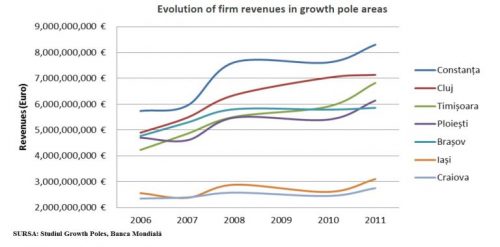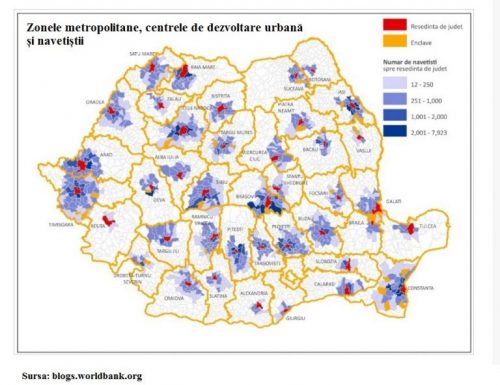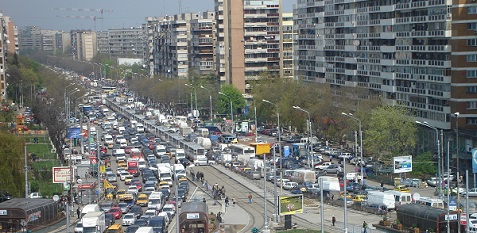 The eight largest metropolitan areas of Romania (Bucharest, Brasov, Cluj-Napoca, Constanta, Craiova, Iasi, Ploiesti and Timisoara) represent 50% of the country’s population and 75% of the “firm revenues”. Their development potential is though insufficiently tapped – according to a study of the World Bank, conducted for the Ministry of Regional Development and Public Administration (MDRAP).
The eight largest metropolitan areas of Romania (Bucharest, Brasov, Cluj-Napoca, Constanta, Craiova, Iasi, Ploiesti and Timisoara) represent 50% of the country’s population and 75% of the “firm revenues”. Their development potential is though insufficiently tapped – according to a study of the World Bank, conducted for the Ministry of Regional Development and Public Administration (MDRAP).
The revenues generated by five of the eight areas were between EUR 5.9 and 8.4 billion each, according to the 2011 data analysed by the World Bank in this study, launched this year. The revenues of the metropolitan areas of Iasi and Craiova were about three billion euro. In the same time, Bucharest contributes over 30 billion lei to the state budget.
On the other hand, „a clear and deep understanding of how the growth poles can contribute to the overall development of Romania is missing„, notifies the World Bank’s analysis. Apart from the metropolitan areas, the study also considered other 13 urban development centres of regional importance.
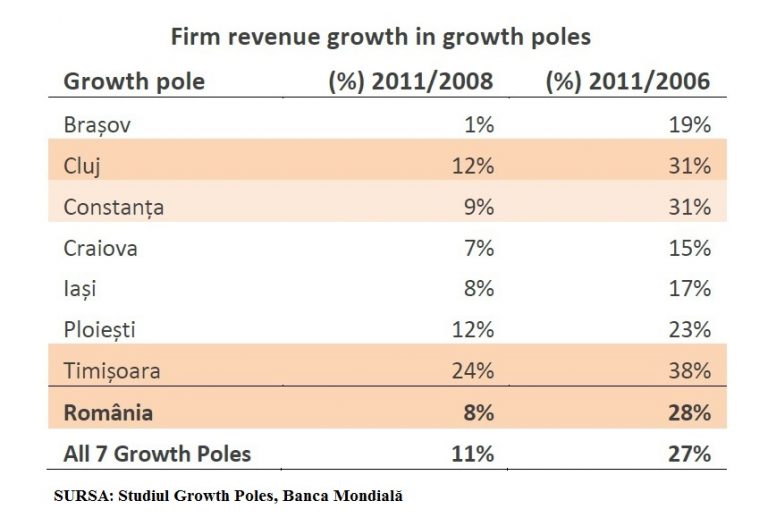 In the table above, Cluj-Napoca and Timisoara are the only two development poles that seem not to have been affected by the crisis from 2008. They are actually the only development poles that have been continually growing since 2006. Along with Constanta, they successfully grew faster than the national average.
In the table above, Cluj-Napoca and Timisoara are the only two development poles that seem not to have been affected by the crisis from 2008. They are actually the only development poles that have been continually growing since 2006. Along with Constanta, they successfully grew faster than the national average.
Altogether, the seven growth poles (without Bucharest) had a poorer performance than the country as a whole. This result can be explained by the fact that a large part of Romania’s growth is generated in and around the capital city, Bucharest. The only counties that succeeded to keep the growth pace with Bucharest are Timis, Cluj, Sibiu and Arges (where Dacia plant is located).
More data and statistics about each metropolitan area and development centre can be found here:
Growth Poles – World Bank’s study on metropolitan areas of Romania
„Unfortunately, these drivers of development are not properly working in Romania, highlights the World Bank’s analysis for MDRAP,” according to Mircea Ionescu-Heroiu, Senior Urban Development Specialist at the World Bank, in a review published on blogs.worldbank.org.
A report by Eurostat points out that metropolitan areas from the EU generate around 70% of GDP, record the fastest population growth, generate a significant share of all new jobs created and gather a significant share of tertiary graduates.
Commuters’ force and development
The current approach of the authorities is inherently based on the local boundaries, although some urban centres depend on other centres from different regions.
Consequently, a limitation to a buffer area of 30 km around the growth poles occurs. It is ignored that the functional economic areas are usually larger. People are generally open to commute up to two hours daily (out and home),” according to the study.
The larger the metropolitan areas, the more they stimulate the development of stronger economies, using larger pools to attract the workforce. At the same time, larger areas allow more effective investment incentives.
As a result, Romania’s metropolitan areas and their borders should be redesigned.
Finally, the Romanian concept of metropolitan areas „relies entirely on the voluntary agreement between municipalities. In practice, that led to the formation of urban associations that fail to formally include all localities from the respective functional areas,” notes the World Bank study.
*
Metropolitan areas, urban development centres, commuters
*
The definition of metropolitan area includes a municipality, together with the surrounding areas that can be travelled (by car) within an hour starting from the city suburbs.
There are though only a few municipalities with a functional metropolitan public transportation system (e.g. Alba Iulia, Cluj-Napoca), according to the study. Few municipalities have drawn up spatial planning documents for their own metropolitan areas (e.g. Braila, Brasov, Craiova). And even fewer municipalities were able to implement projects at the metropolitan level (e.g. Constanta), according to the source.
The map above shows the polarization resulted from the metropolitan development of Romanian urban areas of medium and large size. Areas in red show the county capital cities and in blue – localities where at least 15% of the workforce commutes to the county capital for a job.
County capitals attract workforce from the neighbouring towns and some cities (Constanta, Cluj-Napoca, Timisoara, Brasov, Ploiesti, Sibiu, Oradea and Arad) attract workforce from even longer distances.
Furthermore, Bucharest attracts a significant share of the workforce from Ploiesti and, on weekly basis, from farer distances, which is less visible in the following map.
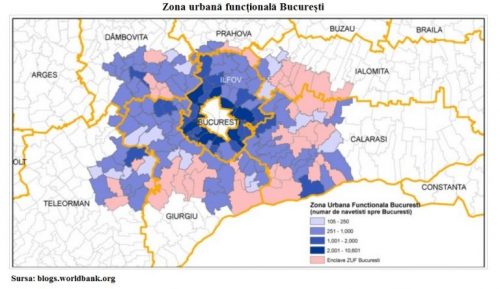 Functional urban area of Bucharest
Functional urban area of Bucharest
Similarly, Constanta city attracts workforce from the whole county. Every morning, Constanta’s workforce increases by 26.4% or about 38,000 people.
Challenges
Among the challenges facing the Romanian metropolitan areas, the most important are:
- The lack of proper planning on metropolitan development, which may slow down growth and the economic development. Transportation infrastructure does not stimulate enough the access of the workforce. The World Bank specialist, Mircea Ionescu-Heroiu, gives the example of the Cluj city entrance via Floreşti, but at least as critical is the Bucharest-Ploiesti route, both causing delays and numerous car crashes.
- The lack of a clear legal framework and the limited incentives offered by the central government (funding for metropolitan projects) limit the ability of local governments to adopt an integrated approach of the metropolitan development.
- And again: Growth and investment in the dynamic urban areas have made increasingly more people commute or relocate, „which requires integrated metropolitan transportation solutions„.
Essential truisms
Increased spatial planning has a critical importance for attracting investment and encouraging improvements in terms of development results at the urban level.
„Specialists in urban planning know that a good plan that supports an efficient and sustainable development of a city no longer requires readjustment once the implementation starts. Once a building has been raised and a road built, it is almost impossible to change their place.
„When metropolitan areas do not develop as continue areas, but individual places and self-sufficient systems, there is a risk of urban growth marked by dysfunction and inefficiency,” recalls Mircea Ionescu-Heroiu, Senior Urban Development Specialist at the World Bank, in his article.


